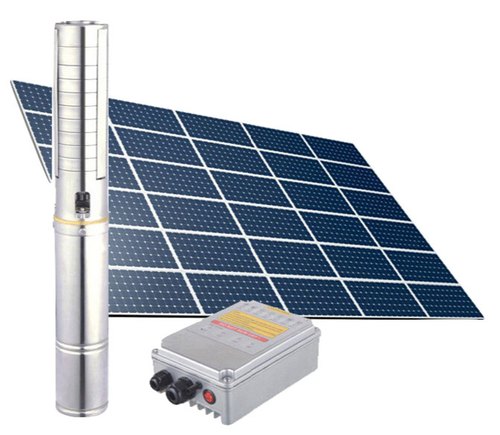
Solar Water Pump Prices
Solar water pump prices in Kenya by Grekkon Limited are provided based on the pump specs
Our submersible solar water pumps for sale in Kenya are categorised as;
- Motor size. This is given in kilo watts (kW) or horse power (Hp). The motor operates on direct current (DC) generated by the solar panels, or from a battery. The larger the motor size, the more the power a motor consumes, and provides to the pump
- Head. This is the pressure rating provided in meters (M) or bar. It determines how far vertically that pump will push water. The higher the pressure rating, the higher the push. Deep wells use higher pressure rated submersible solar pumps than shallow wells
- Flow rate. It is the volume of water evacuated over a given time unit. This is given as litres per second, or per minute, or as cubic litres per hour. This determines the size of the outlet pipe. A pump that evacuates more water has a larger outlet
Smaller domestic water pumps are portable solar water pumps. It is easy to move them from one shallow well to another. This is not the case for large, permanent, deep well solar water pumps
Solar Water Pump Prices In Kenya
| Model No | Power Hp | Watts | No & Panel Size | Head (M) | Flow rate (liters/ hour) | Price in Kes |
| SP 0.5N | 0.6 | 700 | 300W x 1pc | 40M | 5,800 | 37,120 |
| SP 0.6N | 0.8 | 1,200 | 300W x 2pcs | 60M | 5,800 | 40,215 |
| SP 0.8N | 1.1 | 1,300 | 300W x 3pcs | 70M | 5,800 | 46,400 |
| SP 1.0N | 1.3 | 1,400 | 300W x 3pcs | 80M | 5,800 | 52,600 |
The prices shown above are for solar water pumps for wells less than 100M. Beyond this, we provide specific pumps that match the borehole’s water specs. We install submersible solar water pumps across east Africa for all well sizes. Before an installation is made, a well analysis is conducted to ensure the right solar submersible water pump is provided.
